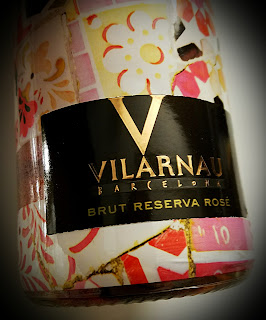Pairing wine with movies! See the trailers and hear the fascinating commentary for these movies, and many more, at Trailers From Hell. This week we celebrate Roger Corman's birthday with wines for three of his films.
April 5th has special significance beyond the fact that it sits roughly halfway between my birthday and tax day, two auspicious occasions in their own right. It also happens to be the birthday of noted producer and director Roger Corman. It further happens to be birthday number 98 for the king of cult movies. We have three of his films this time, and wine pairings for each that we hope will be appreciated. Happy birthday, Roger!
Attack of the Crab Monsters is a 1957 sci-fi, in case the title didn’t tip it off. It was produced and directed by Corman, with a cast of B-movie legends and TV character actors. Russell "The Professor" Johnson is in it, before his Gilligan Island days. Had he been professionally known as Russell "The Professor" Johnson, he might have enjoyed a career in wrestling and/or politics.
A team of scientists experience what the one-sheet calls "a tidal wave of terror" as they investigate the effect of nuclear testing at the Bikini Atoll. We’ll give you three guesses as to what type of sea creature was most affected by the radiation, and the first two don't count.
For crab, radiated or not, we want a white wine with plenty of acidity to provide counterpoint to the sweetness of the meat. Caves Messias has a Vinho Verde wine, from Portugal, which is called Santola. That's Portuguese for spider crab, by the way. You get an artistic rendering on the label of what the crab monster might have looked like before it was nuked. They also have it in rosé, each for around $10.
In 1962, Corman got on board the civil rights train with The Intruder. It's about a racist who tries to undermine school desegregation in a small town in the Southern U.S. The movie has traveled under several other titles, like The Stranger, Shame, and my favorite, I Hate Your Guts. I want the cast and crew jacket from that one.
The film was produced and directed by Corman with William Shatner topping the cast. He drifts into town like a racist Henry Hill, whipping the populace into a frenzy about those kids of other colors. His character has everything but the MAGA hat. If he is still alive 50 years down the road, he has that, too.
Here's a great way to get back at the racists: drink wine made by African-Americans. Anderson Valley's Theopolis Vineyards is owned by Theodora Lee, known by many as Theo-patra, Queen of the Vineyard. The former attorney makes a $40 Petite Sirah that people rave about. If you must have a white wine with this movie, try her dry Symphony for $25.
Corman directed The Tomb of Ligeia in 1964. Vincent Price starred in this adaptation of a story by Edgar Allan Poe, a favorite source for Corman. It was written by future Oscar-winner Robert Towne. We have mentioned before that one of Corman's great talents is his ability to surround himself with other greatly talented people.
The script has a dead wife inhabiting the body of a cat that lures the husband away from his new wife. I'm intrigued. Did I mention the dead wife is buried in the house? Talk about baggage. The new wife really shouldn't complain about the other woman's spirit padding around on four legs. It sounds to me like she got what was advertised.
A little wine might take the edge off the situation, although it might require a lot of wine, depending on your tolerance for having the soul of your husband's dead wife hanging around. It might require a Valium. But let's say wine does it, and why not make it a wine from a Poe story? In "The Cask of Amontillado," the killer vanquishes his victim by entombing him in a wine cellar. Are there worse ways to go? Maybe. Let me think on it. While I'm thinking, I'll have Lustau's Los Arcos Amontillado sherry. It is bone dry and even more complex than Poe's villain.














